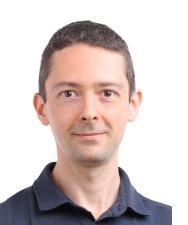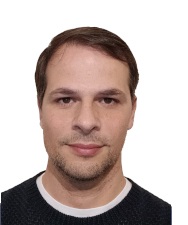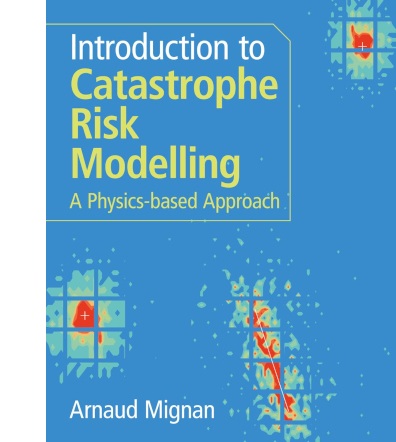A Generic Multi-Risk (GenMR) Open-Source Platform to Model Compound Catastrophes
Led by Mignan Risk Analytics GmbH with collaborators from the University of Lisbon, this project develops an open-source platform that simulates compound catastrophes from first physical principles, capturing risks that emerge from complex interactions in a virtual environment.
Duration of the project: 2025-2027
Background
Many of the costliest catastrophes result from compound events, i.e., domino and cascading effects, and from other risk amplifying factors that can trigger super catastrophes. Because of their complexity and cross-peril nature, most research has focused on limited interactions under specific conditions, making systematic study difficult. The Generic Multi-Risk (GenMR) framework was conceived to address this gap by encoding event interactions in a simulated environment that is simple, yet realistic enough to capture diverse dynamical processes. While the 2024 release of the CAT Risk Modelling Sandbox (with the textbook Introduction to Catastrophe Risk Modelling) offered 10 perils and five environmental layers, it lacked multi-risk capacity. This project merges and extends both initiatives by implementing additional perils, environmental layers, and risk drivers, delivering a controlled, transparent, and comprehensive platform for studying compound event dynamics.
Objectives
- Develop the Generic Multi-Risk (GenMR) platform to model dynamic processes that generate compound events.
- Implement hazard scenarios across a wide range of natural, technological, and socio-economic perils.
- Create a Digital Template, i.e., a virtual environment with multiple environmental layers and a simulated city.
- Encode causal links between events and capture the influence of risk drivers such as climate change and ageing infrastructure.
- Share knowledge and build capacity in accumulation risk assessment by releasing GenMR and its underlying CAT risk models as open source.
- Address fundamental questions on compound events: What patterns of chains of events lead to major losses? Which critical events or drivers amplify these risks?
Fields of research / technical cooperation
Catastrophe risk modelling, environmental science, dynamical systems
 Arnaud Mignan is CEO and principal investigator of Mignan Risk Analytics GmbH, a consulting firm in catastrophe risk modelling founded in 2023. In parallel, he served as Lead Specialist at the World Bank (2023-2024). He was previously an Associate Professor at the Institute of Risk Analysis, Prediction and Management (Risks-X), Southern University of Science and Technology (SUSTech), Shenzhen (2020-2022), and a Guest Professor at the Risk Center of the Swiss Federal Institute of Technology Zurich (ETH Zurich, 2022). During this three-year period, he created and taught the course Introduction to Catastrophe Risk Modelling, which led to the publication of a textbook of the same name with Cambridge University Press (2024). Earlier, Arnaud worked for over a decade as a Senior Researcher at ETH Zurich, following four years as a Senior Catastrophe Risk Modeller at Risk Management Solutions (RMS), London (2006-2010). He earned his PhD in Geophysics in 2006 from the Institut de Physique du Globe de Paris (IPGP).
Arnaud Mignan is CEO and principal investigator of Mignan Risk Analytics GmbH, a consulting firm in catastrophe risk modelling founded in 2023. In parallel, he served as Lead Specialist at the World Bank (2023-2024). He was previously an Associate Professor at the Institute of Risk Analysis, Prediction and Management (Risks-X), Southern University of Science and Technology (SUSTech), Shenzhen (2020-2022), and a Guest Professor at the Risk Center of the Swiss Federal Institute of Technology Zurich (ETH Zurich, 2022). During this three-year period, he created and taught the course Introduction to Catastrophe Risk Modelling, which led to the publication of a textbook of the same name with Cambridge University Press (2024). Earlier, Arnaud worked for over a decade as a Senior Researcher at ETH Zurich, following four years as a Senior Catastrophe Risk Modeller at Risk Management Solutions (RMS), London (2006-2010). He earned his PhD in Geophysics in 2006 from the Institut de Physique du Globe de Paris (IPGP).
 José Pedro Matos obtained his MSc at Lisbon’s Instituto Superior Técnico (IST) in 2008. Following a brief period working as a consultant in water supply, he enrolled in a joint PhD at EPFL in Lausanne and IST to pursue the topic of machine learning and large-scale hydrology. From 2014 to 2017, he worked as a post-doc at EPFL, having participated in several projects related to uncertainty, risk, and the operation of complex hydropower systems. From 2017 to 2022, he worked at Gruner-Stucky Ltd., a Swiss company at the forefront of the design of large dams. There, he was deputy head of department (hydropower schemes), leader of the competence center for hydrology, and team leader for hydraulics and hydrology of the Rogun dam (expected to become the highest in the world at 335 m). In 2022, José Pedro joined IST as an Assistant Professor. He focuses on the topics of risk, machine learning, operational probabilistic forecasting, hydrology, water resources management, and optimization.
José Pedro Matos obtained his MSc at Lisbon’s Instituto Superior Técnico (IST) in 2008. Following a brief period working as a consultant in water supply, he enrolled in a joint PhD at EPFL in Lausanne and IST to pursue the topic of machine learning and large-scale hydrology. From 2014 to 2017, he worked as a post-doc at EPFL, having participated in several projects related to uncertainty, risk, and the operation of complex hydropower systems. From 2017 to 2022, he worked at Gruner-Stucky Ltd., a Swiss company at the forefront of the design of large dams. There, he was deputy head of department (hydropower schemes), leader of the competence center for hydrology, and team leader for hydraulics and hydrology of the Rogun dam (expected to become the highest in the world at 335 m). In 2022, José Pedro joined IST as an Assistant Professor. He focuses on the topics of risk, machine learning, operational probabilistic forecasting, hydrology, water resources management, and optimization.
Introduction to Catastrophe Risk Modelling (Cambridge University Press)
Overview of the book
Author: Arnaud Mignan
- A comprehensive overview of 42 natural and man-made perils
- Step-by-step guidance on building a simplified catastrophe risk model
- Probabilistic hazard & risk assessment aligned with industry standards
- Models provided as analytical expressions, algorithms, or pseudocode
- Coverage of catastrophe dynamics, complex Earth systems, and beyond
- Access to online resources, including the CAT Risk Modelling Sandbox
A Generic Multi-Risk Platform - To model compound catastrophes | Une Plateforme multi-risque générique - Pour modéliser les catastrophes ‘composées’ by Dr. Arnaud MIGNAN (Author) | EN | 16.10.2025 | Read the presentation
• GenMR Python library: https://github.com/MignanRiskAnalytics/GenMR_SCOR
• Online documentation: https://mignanriskanalytics.github.io/GenMR_SCOR/